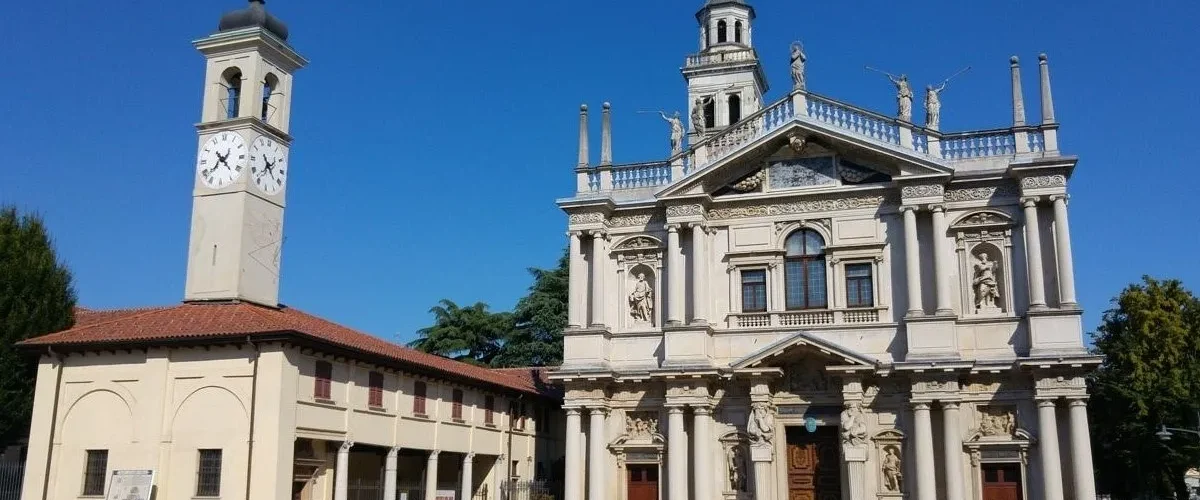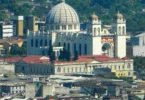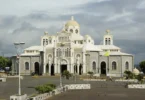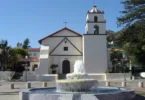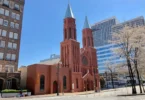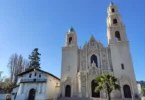Introduction

The Sanctuary of Our Lady of Miracles (Santuario della Beata Vergine dei Miracoli) is a historic Catholic sanctuary located in Saronno, Italy. It was constructed in 1498 by the local population in response to the widespread devotion to the Madonna of the Miracle, a statue believed to have miraculous healing powers. Before the sanctuary’s construction, the statue had been housed in a modest chapel along the Strada Varesina. Over time, the sanctuary became a significant place of pilgrimage for those seeking divine intervention, and the statue’s reputation for miraculous healings spread far and wide. In recognition of its importance, the sanctuary was elevated to the status of Minor Basilica by Pope Pius XI.
The sanctuary is renowned not only for its religious significance but also for its architectural beauty, attracting both pilgrims and visitors alike. The Madonna of the Miracle, which dates back to the late 14th century, continues to be the focal point of worship and devotion. As a place of active Catholic worship, the sanctuary has been part of the Saronno parish since 1986. Today, it remains a key center for spiritual activities, prayers, and the celebration of significant Marian feasts, drawing faithful from both the local community and beyond.
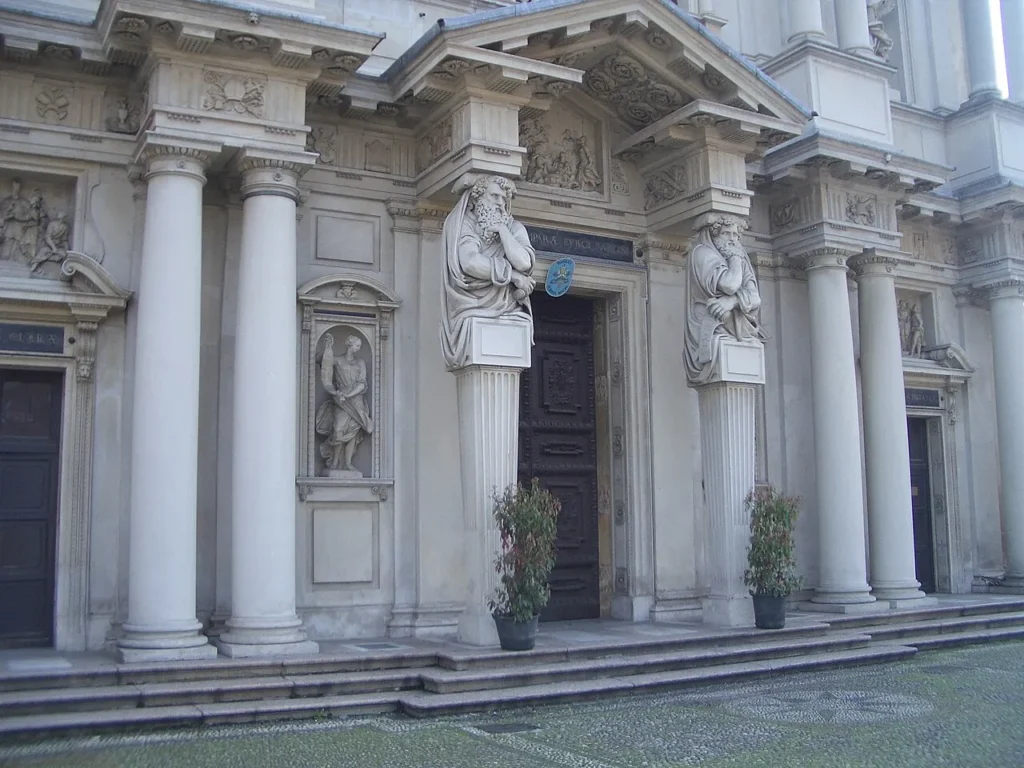
The Sanctuary of the Blessed Virgin of Miracles in Saronno was founded in 1498 by the people of the city to house the miraculous statue of the Madonna. This statue, known as the Madonna of the Miracle, dates back to the second half of the 14th century. Initially, the statue was placed in a small chapel along the Varesina road, where it was believed to grant miraculous healings to those who prayed before it. As word spread about the statue’s powerful intercession, the devotion to the Madonna grew, and the local community decided to build a larger, more prominent sanctuary to honor her.
The construction of the sanctuary marked the beginning of a new chapter in the religious life of the region. Over time, the Sanctuary of the Blessed Virgin of Miracles became one of the most important Marian pilgrimage sites in Lombardy. The sanctuary was enriched not only by its sacred history but also by remarkable art treasures, which were added over the centuries. These included intricate frescoes, sculptures, and altarpieces, all of which reflected the deep devotion of the people and the region’s rich artistic heritage.
The sanctuary’s significance continued to grow, and on January 2, 1923, it received a major ecclesiastical honor. Pope Pius XI elevated the Sanctuary of the Blessed Virgin of Miracles to the status of a minor Roman basilica, recognizing its importance as a place of worship and devotion. This distinction further solidified the sanctuary’s role as a key spiritual center in the Lombardy region and continued to attract pilgrims seeking the intercession of the Blessed Virgin Mary.
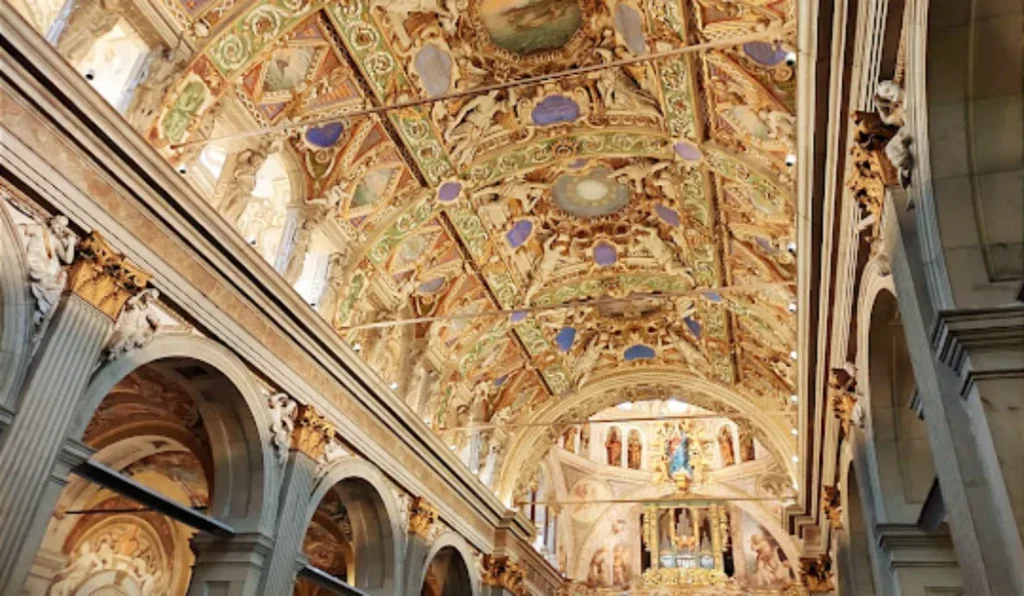
Architectural Styles: Baroque architecture.
Beginnings and Early Construction
The construction of the Sanctuary of the Blessed Virgin of Miracles began on May 8, 1498, initiated by the people of Saronno. This was built on the site of a previous chapel that had collapsed three times. The chapel had become a center of devotion due to the popular belief in the miraculous healing of a young man, which occurred in various years according to different sources: 1447, 1460, or 1497. This event was seen as a Christian reinterpretation of a pagan site likely already present along the Varesina road.
While no documents have been found naming the architect responsible for the initial design, the sanctuary follows a Latin cross plan. This design features the apse, presbytery, anti-presbytery, central hall topped with a lantern and dome, and two side chapels. Interestingly, the church’s layout diverges from traditional medieval Latin crosses, emphasizing the centrality of the circular dome, symbolizing unity under God’s protection. The proportions of the design, which include explicit references to the golden ratio, suggest the involvement of an architect with a strong humanistic education, possibly Giovanni Antonio Amadeo, who was working on the Milan Cathedral at the time.
By 1507, a building for the “deputies”—a body responsible for managing the sanctuary’s affairs—was constructed beside the sanctuary. Between 1511 and 1516, a 47-meter bell tower was built, designed by the architect Paolo della Porta, widely regarded as one of the most beautiful bell towers in Lombardy.
The Dome and Renaissance Influence
A key feature of the sanctuary is the dome, which was completed in 1508 under the guidance of Amadeo. The dome is adorned with 24 elegant windows, following a unique pattern derived from the traditional ad quadratum construction method, progressing from the square of the hall to the circle of the dome. This design represents the transition from Earth to Heaven, a symbolic ascent. The dome’s distinct form has come to symbolize the Lombard Renaissance and is considered one of the architectural jewels of the region.
Expansion and Later Developments
The growing number of faithful led to the decision to expand the sanctuary. In 1556, work began on a new building with three naves and five bays. However, progress was slow, and by 1566, only three of the planned bays were completed, and the façade was still temporary. Carlo Borromeo, a key figure in the sanctuary’s history, provided the necessary impetus to resume construction. In 1581, he personally oversaw the translation of the original 14th-century statue of the Madonna into the newly expanded sanctuary.
In 1596, architect Pellegrino Tibaldi was tasked with designing the façade. Construction took place over the next 17 years and was completed in 1613. The design of the façade drew heavily on classical late Renaissance principles and sought to emphasize the sanctuary’s grandeur. Its elaborate ornamental features, including columns, pilasters, caryatids, friezes, and statues, created a solemn and majestic architectural effect.
In 1630, to improve the façade’s appearance, architect Carlo Buzzi designed a solution to lighten the structure. The project was realized in 1666, raising the balustrade that supports statues of the Assumption and angels with trumpets.
Artworks and Interior Decoration
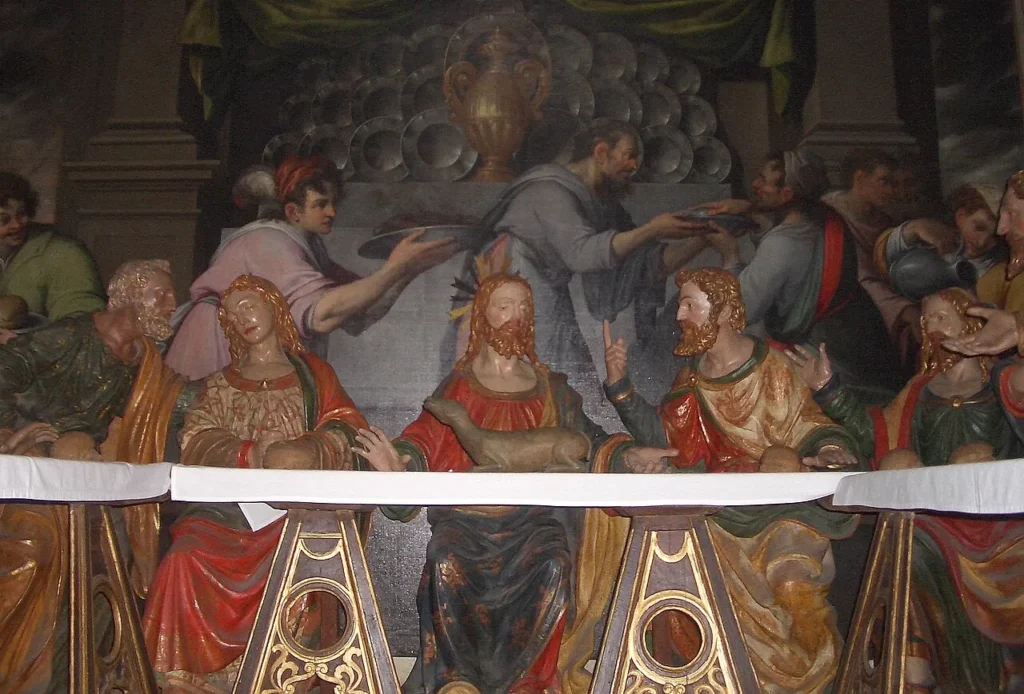
The sanctuary’s interior decoration began soon after the completion of its Renaissance architecture, with several renowned Lombard artists contributing to the artistic program. Painters such as Bernardino Luini, Cesare Magni, Gaudenzio Ferrari, and Bernardino Lanino, along with wood sculptors like Andrea da Milano and Giulio Oggioni, created works that continue to decorate the sanctuary today.
Bernardino Luini, a prominent figure associated with the sanctuary, is known for the frescoes in the apse, presbytery, and antepresbytery, as well as those beneath the dome. These works focus on key moments from the life of the Virgin Mary. In the antepresbytery, for instance, Luini painted the Marriage of the Virgin and Jesus Among the Doctors. The presbytery features the Adoration of the Magi and the Presentation of Jesus at the Temple. Luini’s narrative style, with its delicate figures and rich use of perspective, conveys a sense of calm movement and grace. His use of “sfumato,” a technique developed by Leonardo da Vinci, gives his figures a soft, almost ethereal quality.
The sanctuary’s frescoes are part of a larger cohesive artistic program. The scenes are framed by pilasters, supporting terracotta arches, and surrounded by representations of the Four Evangelists and Four Doctors of the Church. The pilasters are adorned with monochrome figures symbolizing the theological and cardinal virtues, as well as Peace. Through these works, the interior of the sanctuary reflects both the grandeur of its architectural design and the deep faith of the Lombard people, making it a significant religious and artistic landmark.
The Frescoes of Gaudenzio Ferrari
After the death of Bernardino Luini in 1532, Gaudenzio Ferrari was invited to continue the fresco work at the Sanctuary of the Blessed Virgin of Miracles in Saronno. Ferrari, who had been completing frescoes in San Cristoforo in Vercelli, signed a contract for his work in Saronno on 15 June 1534. Between the signing of the contract and the start of the fresco work in July 1535, Ferrari conceptualized preparatory drawings for both his paintings and the wooden sculptures that Andrea da Milano would create. Ferrari thus assumed the critical role of coordinating the entire decorative scheme for the dome of the sanctuary, a responsibility he held until 1545, the year before his death.
Ferrari, hailing from Valduggia, had previously tackled the theme of musical angels during his early career in Varallo, specifically in the Sacro Monte. Now, more than thirty years later, he returned to the theme, this time on a grander scale, as he was entrusted with painting an entire dome. He chose the “Concert of Angels” as his central theme, a joyful depiction of Paradise welcoming the Blessed Virgin, filled with musical and angelic presences.
In his fresco, Ferrari arranged a multitude of angels in concentric circles, each group performing a musical role. The angels in the highest circle, bathed in light, look upward toward the Eternal Father, who is situated at the center of the dome. Below them, in a vibrant concert, other angels sing and play an array of instruments. Ferrari’s painting includes 56 different musical instruments, including harps, lutes, bagpipes, flutes, trumpets, and more. These instruments are not merely depicted as realistic representations but are part of a greater metaphor for the divine harmony of Paradise.
Ferrari’s composition is filled with energy and color, capturing the harmonious chaos of the heavenly concert. He even took artistic liberties with some of the instruments, inventing hybrids or imbuing moments of playful irony, such as depicting an angel playing a bagpipe with two bags. This whimsical touch reflects Ferrari’s love of music, as he was known to play the lyre and lute, a fact recorded by Lomazzo in his Temple of Painting (1590). The diversity of instruments and the exuberant energy of the scene underscore the idea of a divine musical “Babel,” where countless voices come together in perfect unity.
The Wooden Statues of Andrea da Milano
Alongside Gaudenzio Ferrari’s frescoes, Andrea da Milano, a prominent Lombard sculptor, contributed greatly to the sanctuary’s artistic program. His involvement in the sanctuary began in 1535, and his work continued until 1539, when the sanctuary’s sculptural elements were completed.
Andrea da Milano created several life-sized, polychrome wooden statues for the sanctuary. His most notable works include sculptural groups for the side chapels, adjacent to the dome hall. In the left chapel, which Bernardino Luini had previously decorated with frescoes of angels holding the symbols of the Passion, Andrea carved “The Last Supper” scene. This work is characterized by its dramatic intensity, with the apostles reacting to Christ’s announcement of betrayal. Andrea’s careful attention to the figures’ poses, the use of color, and the drapery evokes the emotive power of Leonardo’s famous Last Supper.
In the right chapel, Andrea da Milano’s sculpture of the Lamentation over the Dead Christ (or Deposition from the Cross) is a poignant and powerful work. The figures in this group are expressive, emphasizing the sorrow of Christ’s death. Originally, this scene was part of a larger sculptural group that included other moments of Christ’s Passion, such as the Descent into Limbo. Today, only the Lamentation remains intact, though some pieces were later re-arranged.
Andrea’s work in the dome is equally important. He carved the figure of the Eternal Father, positioned at the center of the dome, and began the figure of the Assumption of the Virgin at the drum’s height. The latter was completed by Battista da Milano in 1537. In addition to these major works, Andrea da Milano also created statues of saints, including Saint Lucy, Saint Agatha, Saint Mary Magdalene, and others. These statues adorned the sanctuary, enhancing its religious significance and artistic grandeur.
Bell Tower
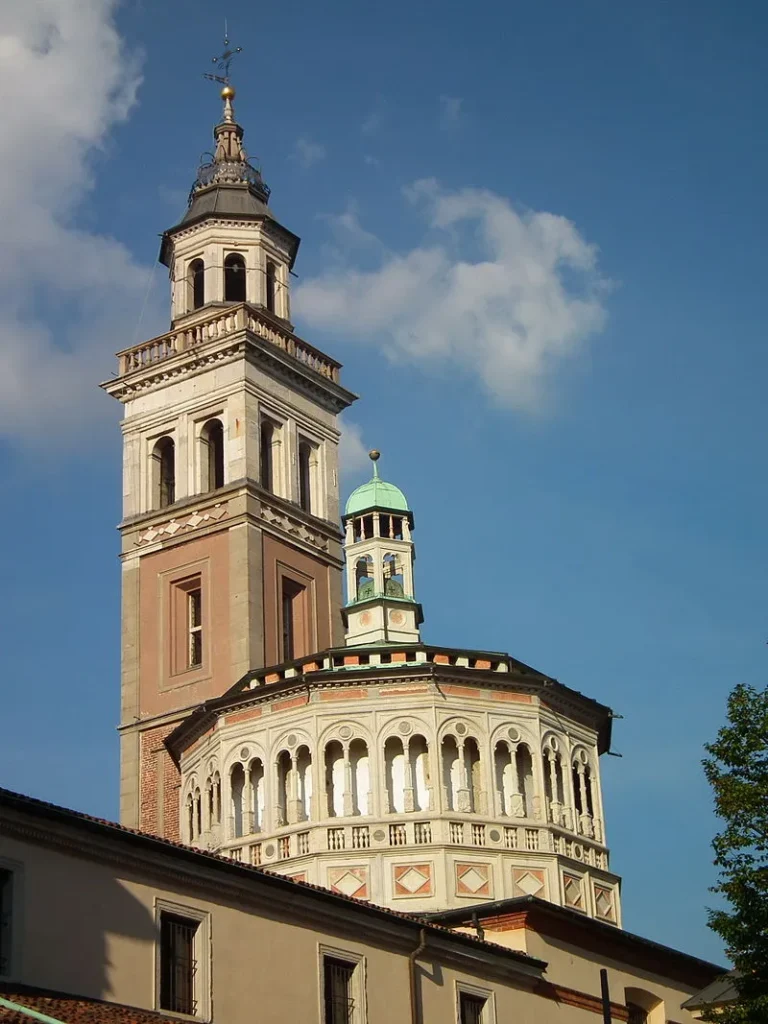
The bell tower of the Sanctuary, completed in 1516 at 47 meters tall, initially housed two bells, with a larger one breaking in 1555 and being recast. By 1567, the tower had three bells, but after the middle bell broke in 1567, all three were recast into two larger bells in 1585 by an unknown founder. In 1617, a new larger bell was cast by Nicola Bonavilla, but it cracked in 1619 and was recast in 1640 by the Milanese founders Lorenzo and Pietro Paolo Mirri. The bells underwent further modifications, with the largest moved to the lower cell in 1922. The current bell concert, tuned in the Ambrosian system, consists of three bells: the smallest (G3, 987 mm), middle (F3, 1097 mm), and largest (Eb3, 1257 mm). Additionally, a bell in the cloister, cast in 1617, rings an F♯ 4 (513 mm).
The Clock Tower
In 1594, a small clock tower was added to the Sanctuary, complete with a bell to strike the hours, which was also cast that year. In 1650, the tower was enlarged for aesthetic purposes, retaining the original clock and bell, but in 1668, during clock repairs, the bell tower was completely rebuilt. By 1757, the clock became irregular and expensive to repair, prompting the decision to construct a new clock and demolish the original clock tower. In 1769, after the maintenance contract for the new clock expired, a new tower was built on the same site, and a bell was purchased but then sent to the Bonavilla brothers in Milan. They melted it down to create two new bells: a half-hour bell (E♭ 4, 551.5 mm) and an hour bell (D♭ 4, 639 mm), both cast in 1769.
Feast Day
Feast Day: 21 June
The feast day of the Sanctuary of Our Lady of Miracles (Santuario della Beata Vergine dei Miracoli) in Saronno is celebrated on June 21. This day specifically honors the Madonna dei Miracoli, the miraculous image housed in the sanctuary, which has long been the center of devotion for the local community and pilgrims. The feast is marked by religious ceremonies, including Masses and processions, celebrating the miracles attributed to the Madonna.
Church Mass Timing
Monday : 7:00 AM, 9:00 AM, 6:00 PM
Tuesday : 7:00 AM, 9:00 AM, 6:00 PM
Wednesday : 7:00 AM, 9:00 AM, 6:00 PM
Thursday : 7:00 AM, 9:00 AM, 6:00 PM
Friday : 7:00 AM, 9:00 AM, 6:00 PM
Saturday : 7:00 AM, 9:00 AM, 6:00 PM
Sunday : 8:00 AM, 10:00 AM, 11:30 AM, 6:00 PM
Church Opening Time:
Monday : 6:30 am – 12:00 pm, 4:00 pm – 7:00 pm
Tuesday : 6:30 am – 12:00 pm, 4:00 pm – 7:00 pm
Wednesday : 6:30 am – 12:00 pm, 4:00 pm – 7:00 pm
Thursday : 6:30 am – 12:00 pm, 4:00 pm – 7:00 pm
Friday : 6:30 am – 12:00 pm, 4:00 pm – 7:00 pm
Saturday : 6:30 am – 12:00 pm, 4:00 pm – 7:00 pm
Sunday : 7:30 am – 12:30 pm, 4:00 pm – 7:00 pm
Contact Info
Address :
Piazzale Santuario, 2, 21047 Saronno VA, Italy.
Phone : +39029603027
Accommodations
Connectivities
Airway
Aeroporto di Milano Malpensa (MXP) Ferno, to Sanctuaire de la Blessed Virgin of Miracles, Saronno, Italy distance between 24 min (32.0 km) via A8/E62 and SS336.
Railway
Gerenzano, 21040 VA, Italy, to Sanctuaire de la Blessed Virgin of Miracles, Saronno, Italy distance between 5 min (2.6 km) via Via Varese and V. Gian Pietro Clerici/SP233.

